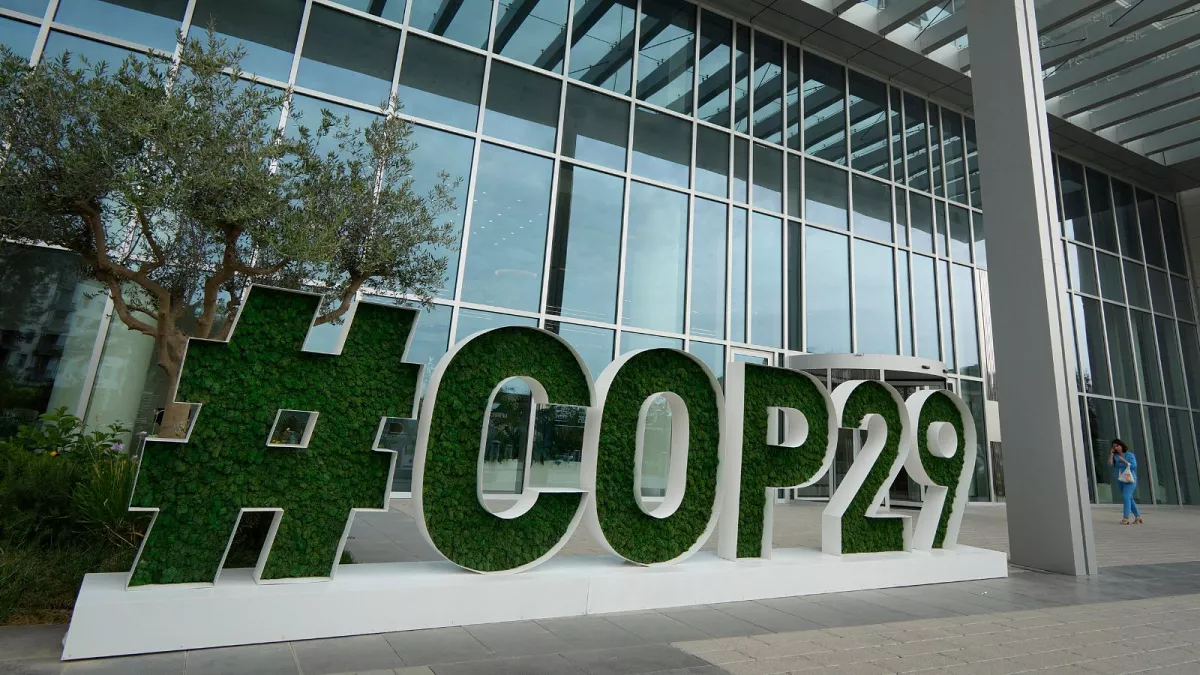Developing Nations Push for Stronger Climate Funding Commitments as COP29 Draws Close

By Faridat Salifu
As the countdown begins for COP29 in Baku, the spotlight is once again on climate finance, a critical issue that threatens to dominate the agenda. With negotiations set to run from November 11-22, developing countries are pressing wealthy nations to significantly increase their financial commitments to address the growing climate crisis.
At stake are billions of dollars in climate finance, which poorer nations argue are crucial to their ability to adapt to and mitigate the impacts of global warming.
Since the adoption of the 1992 UN Framework Convention on Climate Change, wealthier nations have been obligated to support developing countries in their climate efforts.
In 2009, this responsibility was formalized with a pledge to provide $100 billion annually by 2020, a target that was only reached in 2022, eroding trust and raising doubts about the willingness of richer nations to fulfil their obligations.
This year’s conference is expected to yield a new financing goal to take effect beyond 2025.
However, the debate over who should contribute has intensified. India, a vocal advocate for increased funding, has called for $1 trillion per year, and some proposals go even higher.
Yet the major donors, including the United States, European Union, and Japan, are pushing for greater involvement from other global powers, notably China and Gulf nations, given their current roles as significant greenhouse gas emitters.
The question of how much money is actually needed remains contentious. A UN report estimates that developing nations, excluding China, will require $2.4 trillion annually by 2030.
However, the ambiguity surrounding the sources of funding, whether from public or private capital, and how the money is distributed, has muddied the negotiations. Campaigners argue that clearer financial commitments, with distinct categories for emissions reduction, adaptation, and disaster relief, are essential.
One of the more polarizing aspects of the debate is over the so-called “loss and damage” payments, a form of disaster relief for countries hit hardest by climate change. Activists are calling for $400 billion annually to be included under this category, but developed countries are pushing back, resisting efforts to fold these payments into any new climate finance agreement.
As COP29 approaches, the potential solutions on the table are varied. Some nations have floated the idea of global taxes, on aviation, maritime transport, or even on the ultra-wealthy, as a means of raising additional revenue.
Meanwhile, proposals to redirect fossil fuel subsidies towards clean energy investments, or to forgive the debt of developing nations in exchange for climate action, are also being considered.
Azerbaijan, the host of this year’s summit, has suggested that fossil fuel producers contribute to a new fund to support poorer nations, further stirring debate.
While the prospect of a breakthrough remains uncertain, the upcoming negotiations are likely to serve as a bellwether for the global community’s willingness to meet the growing demands of the climate crisis.
The outcome of COP29 will not only shape the future of climate finance but also signal whether rich countries are prepared to shoulder their fair share of the burden or continue to pass the buck as the planet warms.
